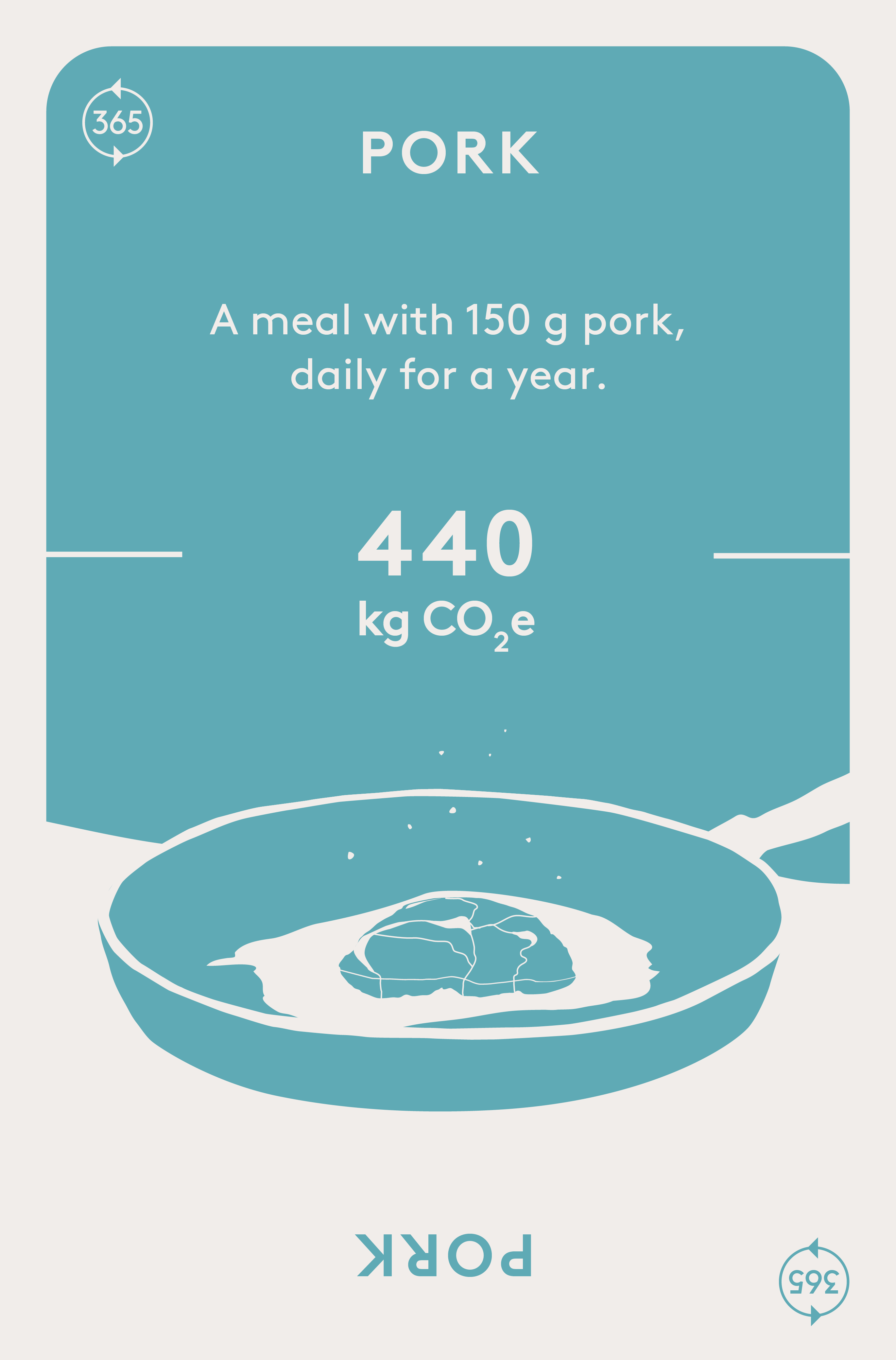PORK

FOLLOW OUR CALCULATION
Click the expendable headlines to look at each step of the calculation.
To calculate the greenhouse gas emissions from consuming a meal of pork and potatoes every day for a year, we multiplied the quantities of food that need to be produced by the emission factors for the respective foods. We assumed that a meal consists of 150 g of boneless pork and 300 g of peeled potatoes.
The annual consumption of pork and potatoes is calculated by multiplying the daily amounts consumed by the number of days in a year.
150 g of pork per day × 365 days per year ≈ 54.8 kg per year
300 g of potatoes per day × 365 days per year = 109.5 kg per year
The calculations show that the annual consumption amounts to 54.8 kg of pork and 109.5 kg of potatoes. These quantities refer to what is actually consumed, which means boneless pork and peeled potatoes.
To meet this “final consumption”, more food needs to be produced, due to waste and losses in the supply chain between producers and consumers. Waste and losses refer to the proportion of the produced food that is not consumed for various reasons. To get an accurate picture of the climate impact, the emissions of what is not eaten must also be included. The following waste factors have been used:
– Pork waste: 17%
– Potato waste: 53%
These waste factors represent average values for the food industry in Europe and include producer, wholesale and consumer waste. A 17% waste for pork means that 17% of the butchered meat is not consumed (including bones and meat not consumed for other reasons). A reduction of 17% gives the change factor (1 − 0.17). The quantity of butchered pork (with bones) that must be produced is calculated by dividing the amount of boneless pork ultimately consumed by this change factor. The amount of potatoes (with skins) that must be grown is calculated in the same way.
54.8 kg / (1 − 0.17) ≈ 66 kg of pork
109.5 kg / (1 − 0.53) ≈ 233 kg of potatoes
The calculations show that for a person to eat a meal of pork and potatoes every day for a year, 66 kg of butchered pork with bones and 233 kg of potatoes must be produced.
The greenhouse gas emissions from food production are calculated by multiplying the total quantities of pork and potatoes produced by the emission factors for their respective foods.
– Pork emission factor: 5.90 kg CO2e per kg of butchered pork with bones
– Potato emission factor: 0.22 kg CO2e per kg of harvested potatoes with skins
The emission factors for pork and potatoes include emissions from pig farming, potato cultivation, animal feed production, input material production, processing, and transportation.
66 kg of butchered pork per year × 5.90 kg CO2e per kg of butchered pork ≈ 389 kg CO2e per year
233 kg of potatoes × 0.22 kg CO2e per kg of potatoes ≈ 51 kg CO2e per year
The total emissions are calculated as the sum of emissions from pork and potato production.
389 + 51 kg CO2e per year = 440 kg CO2e per year
The calculation shows that the emissions amount to 440 kg CO2e per year.
See more card calculations: